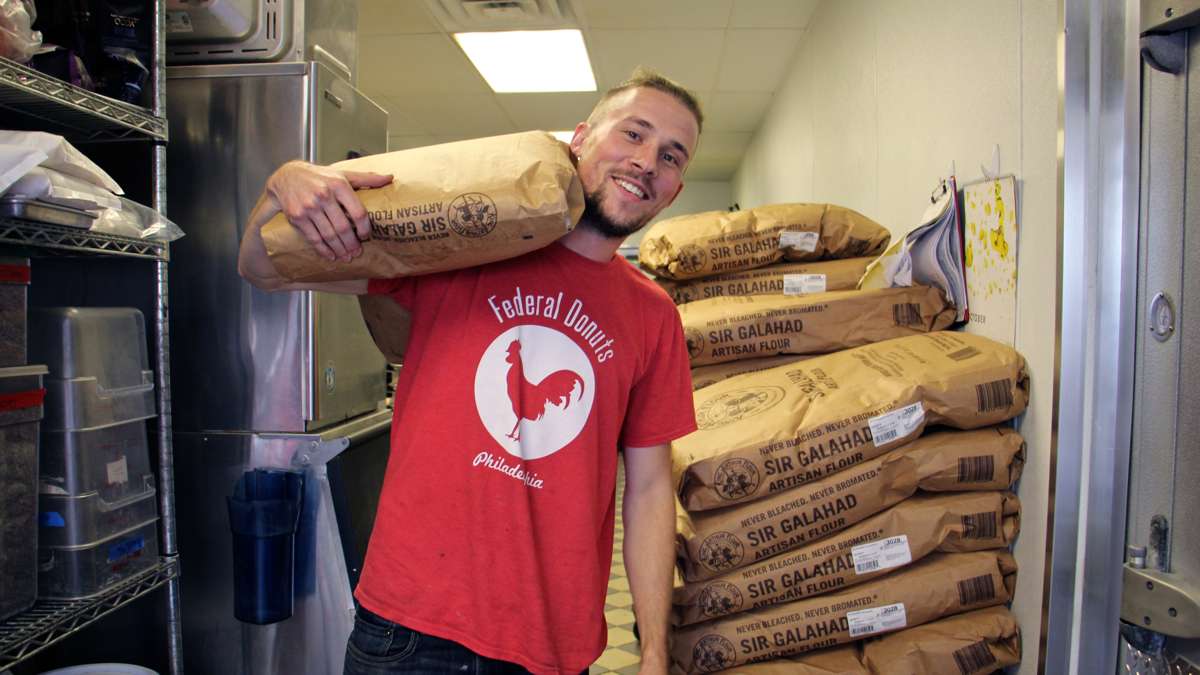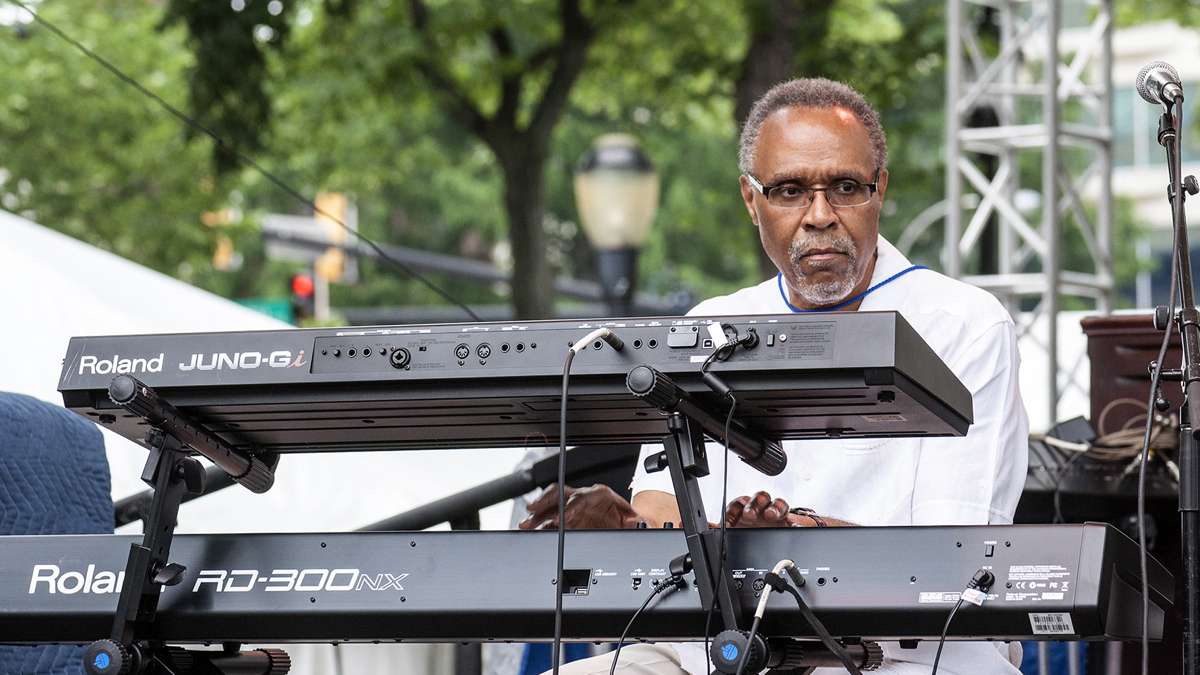From jazz ‘Peter and the Wolf’ to flower songs, Kimmel residents begin projects
ListenJoanna Pascale has a deep interest in flowers.
The jazz singer has firmly established herself in Philadelphia, having held a regular gig at Loews Hotel on Market Street for 10 years, and recording four CDs under her name, most recently “Wildflower.”
She has been making her mark singing smoky standards, like “Stardust” on her first record — “When Lights are Low” — which has the line:
The nightingale tells his fairy taleA paradise where roses bloom.
“Persians believed that when nightingale’s sing, roses bloom,” said Pascale, in the living room of her South Philadelphia row home. “That one line always stuck with me.”
Pascale has been named a Kimmel Center jazz resident. She plans to use the money and help from the program to indulge her interest in flowers. For six months, she will be writing a suite of songs related to floriography — the Victorian-era practice of communicating sentiment with flowers.
“I went down the rabbit hole with all these discoveries and old books,” said Pascale. “People would create ‘talking bouquets,’ where every flower was representative of a specific feeling. You would present this to someone and they would have to decipher what the intention was.”
She also discovered more recent scientific research suggesting flowers may have the ability to communicate with each other, through chemical signals delivered through the air and soil. Pascale plans to write songs sung from the perspective of flowers talking to each other.
Throughout her career, Pascale has always been able to find a jazz standard tune that describes whatever thought or feeling she needed to express. Lately it has been harder to come by the songs that fit perfectly. She is at a point where she needs to write her own songs.
She is one of three artists selected by the Kimmel Center’s Jazz Residency to spent six months working on new material. They get a commissioning fee and the center offers whatever resources it can to help the musicians realize their vision. In the case of Pascale, the Kimmel Center hired the New York-based theater director Ellie Heyman to help Pascale get into the head of a flower.
This is the fourth year the Kimmel has offered its Jazz Residency program, where applicants in the Philadelphia region submit their ideas to a panel of jazz experts from the Juilliard School, Berkelee College of Music, and Lincoln Center.
“Artists lead the way, artists are telling us where we’re going,” said Jay Wahl, the Kimmel’s producing artistic director. “If we want to hear what the future of jazz is going to sound like, what I have to do is listen to what the composers want to make and figure out a way to make that successful.”
The Kimmel offers the artists some money during the residency, but the more substantial contribution may be its institutional network. Wahl can tap the Kimmel’s resources to help the musicians realize their visions.
Another resident in the 2016-2017 program, Jawanza Kobie, wants to do for jazz what “Peter and the Wolf” does for classical music: introduce young listeners to the instruments and structures of the music through a story.
The composer grew up in West Philadelphia and spent his career as an electrician for SEPTA, always playing and writing music on the side. He is now retired, living in Wilmington, Delaware, and is able to spent more energy on music.
He first heard jazz as a kid at home. Kobie’s father was a big fan of the music, always bringing home records to play in the house. Kobie remember’s playing Oscar Peterson’s 1962 “Night Train” album over and over.
Not all kids today have that kind of exposure to jazz.
“You always got to go to the audience where they are, then try to introduce them to something new,” said Kobie. “I can name-drop a lot of jazz tunes, but you don’t want to lose the audience. You want to play something familiar, then introduce them to something new.”
The Kimmel Center is setting Kobie up with a playwright, Deb Margolin, to him write the story, which he will set to music.
For the third resident, the Kimmel is offering time.
Max Swan is a saxophone player steeped in jazz, but reluctant to call himself a jazz player. He spends a lot of time playing in other genres, bringing a jazz sensibility to rock, folk, R&B, and hip hop, while absorbing those other idioms into his music. He has played with the Dirk Quinn Band, Kuf Knotz, LP Stiles, and Noel Gallagher — the guitarist from Oasis who needed a horn arranger when he played the Merriam Theater with his High Flying Birds.
He does all this while holding down a day job. Swan makes deliveries for Federal Donuts.
“Often times I was finding I would get back to my house, rushing, take a shower, put a suit on, and play a jazz gig for a few hours,” said Swan, during a break at the Northern Liberties donut shop. “I was missing the time that I used to have when I would get to work on my music. Sit down and let the air out a little bit. Know what I mean?”
At the Kimmel Center, Swan will take advantage of the rehearsal space and equipment to work on an album that fuses jazz with R&B. He has had the sound in his head for a few years now, without being able to realize it properly.
He may or may not call it “jazz.”
“Jazz has always been the practice I’ve done. That’s the ritual of how I approach the instrument, it’s where my fundamentals come from. But I relate a lot to people who may not be jazz listeners,” said Swan. “It’s understood publicly but there are people who — if you say ‘jazz’ — they think one thing. I don’t want to box myself in with that.”
All Kimmel residents will perform their pieces, even if they are not complete, publicly in May.
WHYY is your source for fact-based, in-depth journalism and information. As a nonprofit organization, we rely on financial support from readers like you. Please give today.









